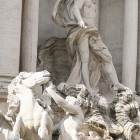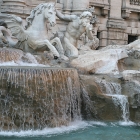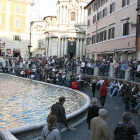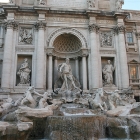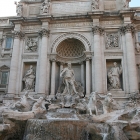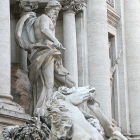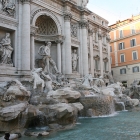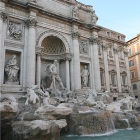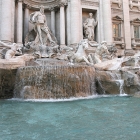Fontana di Trevi, the most romantic place in Rome
Along with Piazza di Spagna, the Colosseum, the Vatican or Victor Emmanuel Palace, Fontana di Trevi is a major tourist attraction that is not to be missed when in the eternal city of Rome. The name of Fontana di Trevi does not come from a specific character as one might think, but from two Italian words meaning „three streets”. And indeed the Trevi Fountain is placed in an important intersection, but its history starts over two thousand years ago, in the imperial age when the fountain marked the end of an aqueduct. Aqueducts, constructions that transported fresh water from springs to major cities were the invention and the pride of the Roman Empire. Around 500 km of aqueducts served Rome, the largest city of its time, some above ground, but mostly under ground. The aqueducts were examples of fine engineering, the water flowing without any other force but that of gravity for tens of kilometers, with a slope of only 34 cm per km.
Of course, today’s aspect of the Trevi Fountain does not date from the time of the Romans, but from 1629 when the Pope decided the rebuilt of it. The architect was Nicola Salvi, who worked in the Italian Baroque style. Prior to Salvi’s work, Gian Lorenzo Bernini, the architect who designed the columns from San Pietro Square in Vatican, moved the fountain at 180 degrees, now standing on one side of the Palazzo Poli.
The fountain is dominated by the statue of Oceanus, the mythological god of the sea, who drives a chariot in an elegant form of a sea shell. His horses are tamed by two Tritons. Aside Oceanus are Salubrity and Abundance.
The Trevi Fountain is always overcrowded with hundreds of tourists that don’t forget the custom of throwing coins into the fountain in hope of returning to Rome.
- Home Page
start page - Architecture
landmark buildings - Sacred architecture
places of worship - Nature
landscape photography - Concert
performing artists - Christmas
Santa Claus pictures
- Jooble
jobs for photographers - Escape
an out of control blog - Merry Christmas
The best organizer of Christmas parties - Astro photo
Eclipse hunting and astrological photography



